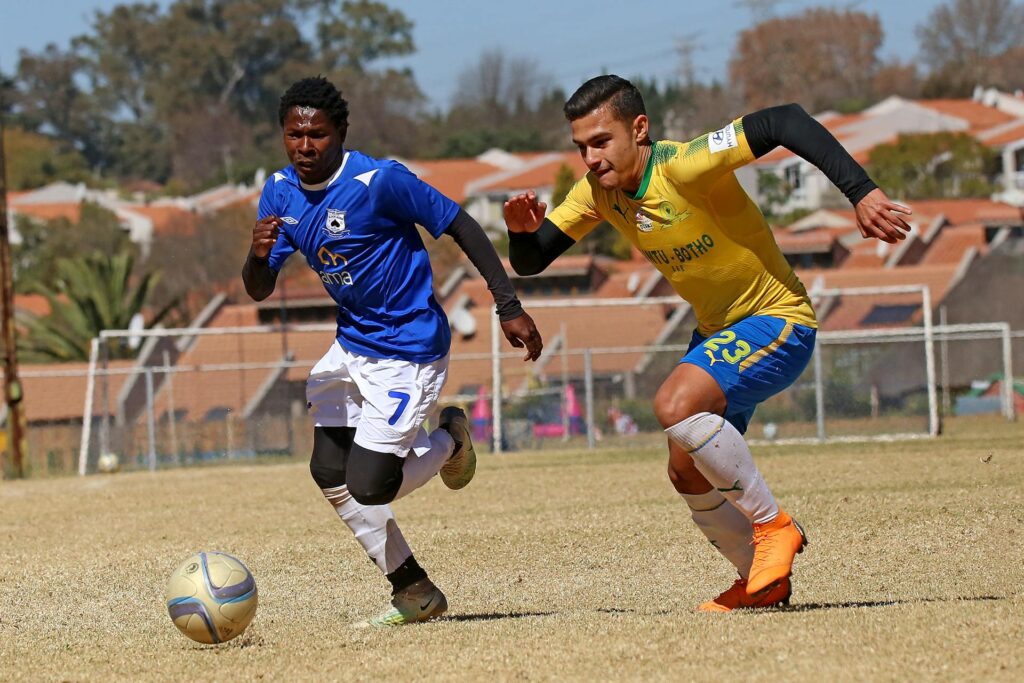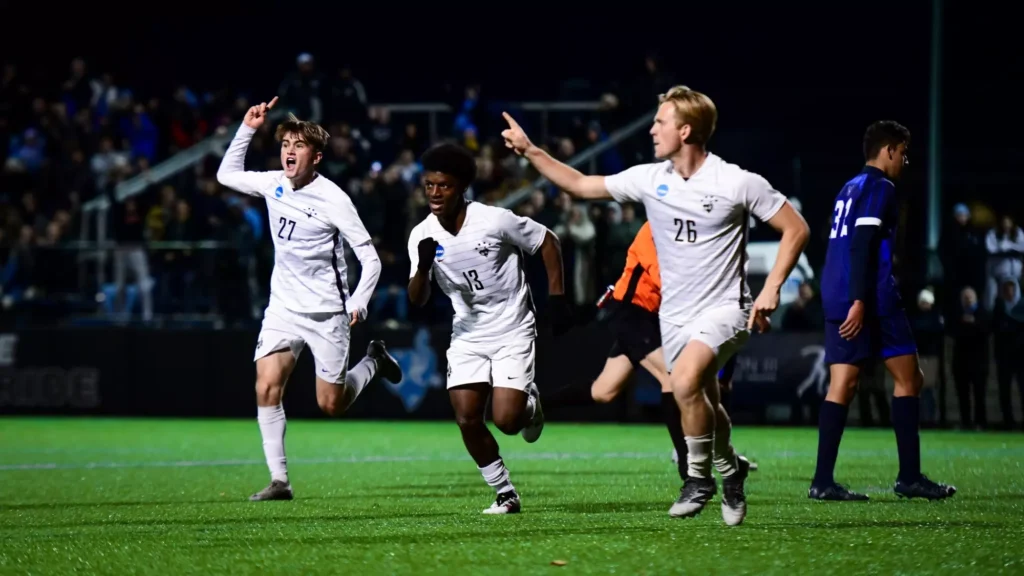Every market has inefficiencies. College soccer recruitment is no different. While thousands of players fight for spots at top D1 programs, smart players exploit overlooked opportunities.
I’ve spent decades watching this market. The biggest returns always come from spots others ignore.
The Market Inefficiency Principle
Most markets reward those who see what others miss. Soccer recruitment punishes those who chase what everyone sees.
Last year, 8,000 players competed for 250 spots in top-20 D1 programs. That’s a 3% acceptance rate. Meanwhile, hundreds of excellent programs struggled to fill rosters with quality players.
Think about that math. Thousands of good players eliminate themselves by chasing the same small pool of opportunities. While equal or better opportunities sit untouched.
I watched a striker turn down guaranteed playing time at strong D3 programs to sit on a D1 bench. He chose brand name over real value. Market inefficiency exploited him, instead of him exploiting it.
Academic Leverage: Your Hidden Multiplier
Your GPA creates more leverage than your goal count. Here’s why:
Athletic scholarships face strict limits. But academic money has fewer restrictions. Smart players turn Bs into As and multiply their value by five.
A midfielder I advised had decent soccer skills but a 4.0 GPA. She understood the market:
- Most players chase athletic money (high competition)
- Fewer players leverage academic strength (low competition)
- Academic scholarships often exceed athletic offers
- Programs value players who bring academic money
She landed a spot at a strong D3 program with more total scholarship money than most D1 players receive.
The Division III Gold Mine
Everyone fights for fool’s gold while real gold sits untouched.
Top D3 programs often beat mid-level D1 programs in:
- Quality of education
- Career outcomes
- Playing time opportunities
- Total cost after academic scholarships
- Quality of life
But here’s what creates the opportunity: Elite players rarely consider D3 programs. Their loss becomes your leverage.
A defender in our program received three D1 offers. But he chose a D3 academic powerhouse instead. Why? He calculated real value:
- Better academic reputation
- More total scholarship money through academic awards
- Guaranteed playing time
- Stronger alumni network
- Better career preparation
Five years later, he plays semi-pro soccer while working at a top consulting firm. The market inefficiency worked in his favor.
Geographic Arbitrage
Most players think locally. Markets reward those who think globally.
California players fight for California programs. East coast players chase east coast schools. Meanwhile, midwest powerhouses struggle to find talent. Southern programs seek northern players. Market inefficiencies create opportunity.
A goalkeeper I knew mapped recruitment patterns. He discovered southern programs valued northern players for their indoor experience. Northern programs wanted southern players for year-round outdoor training. He leveraged this insight to get five offers in regions where his skills carried premium value.
Geography creates blind spots. Smart players exploit these blind spots.
The Timing Advantage
The recruitment market has seasons. Most players never see them.
Early signing windows crush dreams. Late windows create opportunities. But timing isn’t about being early or late. It’s about understanding market cycles.
Consider this: Top programs fill rosters 18 months out. Mid-tier D1 programs recruit 12 months ahead. D3 academic powerhouses often have spots open 6 months before season. Each window creates different opportunities.
A forward I worked with missed early D1 deadlines. Instead of panicking, she studied the market. Found quality programs with late openings. Landed more playing time and better academic fit than her early-signing peers.
The best opportunities often appear when most players have stopped looking.
Position Market Analysis
Markets value scarcity. Position scarcity creates leverage.
Left-footed defenders command premium value. Two-way midfielders who score create bidding wars. Goalkeepers who can play with their feet get multiple offers.
But here’s what most miss: Position value changes by program, by region, by year.
I watched a center-back transform himself into a defensive midfielder. Not because he loved the position. Because he studied program rosters and saw a market gap. Five programs needed his exact skill set. He created artificial scarcity.
Your value isn’t about being the best. It’s about being the best available at what programs actually need.
Think like a commodity trader. Study supply. Understand demand. Position yourself where scarcity creates value.
The Financial Aid Game
Money flows to those who understand its rules. Most players don’t understand the rules.
Athletic scholarships have caps. Academic money doesn’t. Smart players create leverage by understanding both streams. While your teammates chase limited athletic funds, you can tap into unlimited academic resources. Merit awards stack with need-based aid. Department grants create extra value. Even work study programs add hidden advantages most players ignore.
A midfielder in our program turned down a D1 partial scholarship for a D3 academic package. Total savings over four years: $87,000. The market rewarded her understanding of true value.
Program Fit Arbitrage
Fit creates more value than force. Most players never learn this.
I watched a forward reject a “better” D1 program for a D3 school that matched his playing style and academic interests. He found a program where his development timeline aligned with their needs. Where his career goals matched their alumni outcomes.
Five years later, he’s playing semi-pro while pursuing a PhD. His peers who chose prestige over fit mostly stopped playing after two years.
The market rewards those who understand their own value proposition.
The Long Game Strategy
Most players optimize for freshman year. Smart players optimize for life after soccer.
Think about compound interest. Academic programs create career opportunities that multiply over time. Network connections expand exponentially. Skills development compounds yearly. Program reputation affects job prospects in ways most 18-year-olds can’t imagine.
A defender chose a D3 business program over D1 offers. Today she runs sports marketing for a Fortune 500 company. Her college choice compound interest still pays dividends.
Final Market Wisdom
College soccer recruitment is a market. Markets reward those who spot inefficiencies others miss. Who create value others don’t see. Who understand true price versus perceived value. Who think long-term while others chase short-term gains.
Your edge comes from understanding these principles. While others chase perceived prestige, you can chase real value.
Remember: The goal isn’t to win the recruitment game everyone sees. The goal is to win the game most players don’t even know they’re playing.
The question isn’t “Where’s the best program?”
The question is “Where’s the best market inefficiency for your specific value proposition?”
Smart players will read this and start mapping market inefficiencies. Others will keep chasing crowded opportunities. Which player will you be?
Start by mapping program needs against your unique value. Calculate true costs versus perceived value. Look for geographic arbitrage opportunities. Build long-term value propositions.
Stop gambling with your soccer future. First Eleven’s academic-athletic planning creates clear paths to college success. Schedule your evaluation and learn how to leverage market inefficiencies.


